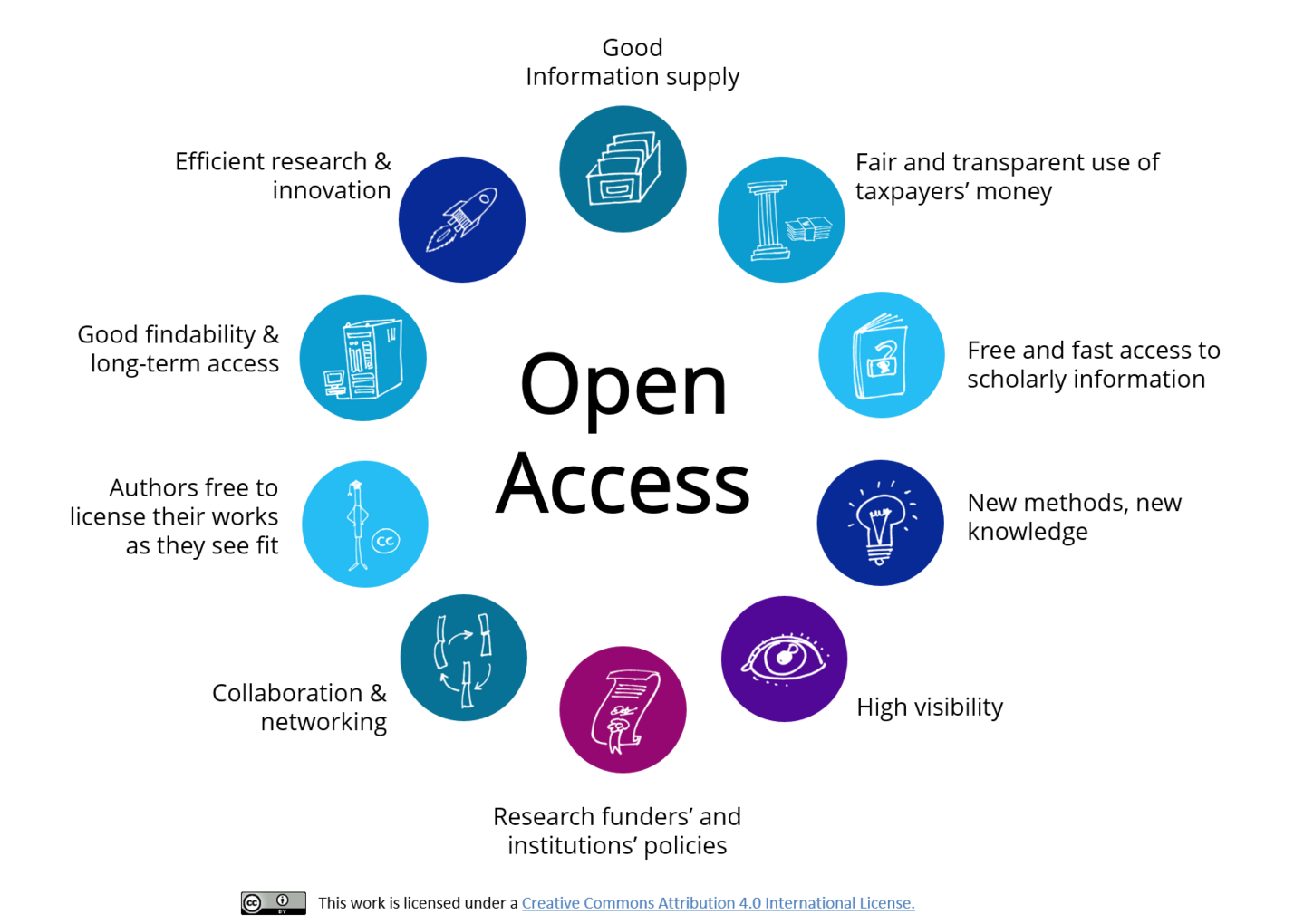
Open Access in Mathematics
In contrast to many natural science or technical disciplines, mathematicians still draw on older literature when investigating current research questions. Therefore, open access in mathematics is not restricted to current research results, but also includes older literature. Retrodigitisation and open access to this digital content thus play an important role in this discipline.
Another difference between mathematics and most natural science disciplines is the acceptance of literature that has not undergone scholarly review. For example, in 2006, Grigori Jakolewitsch Perelman was awarded the Fields Medal for his articles proving the Poincaré Conjecture, which he had published only on the preprint server arXiv. Because it was published open access, Perelman’s proof could thus be checked by different groups, even without undergoing classical peer review.
Mathematicians are highly critical of rising journal prices. Thus, it is not surprising that in this field in particular, researchers often call for, and participate in, boycotts of scholarly publishers (e.g. The Cost of Knowledge).
Open Access Journals
As of March 2024, the Directory of Open Access Journals (DOAJ) listed 778 entries under the keyword Mathematics.
Article processing charges (APCs) are often viewed critically. For this reason, open access mathematics journals often use business models without APCs. Many of these journals are published directly by scientific institutions or professional associations.
Examples include:
Also worthy of mention is the Electronic Library of Mathematics (eLibM), a platform on which open access journals (inter alia Documenta Mathematica) are published.
Because, as mentioned above, older literature is of great importance in mathematics, older journal volumes are often made freely available online even though the current volumes are closed access and thus subject to a fee. In these cases, the moving wall model is often used: for a certain period of time (e.g. the first five years after publication) access is fee-based; after expiry of this embargo period, access is free.
The following are examples of journals that employ this model:
- Journal für die reine und angewandte Mathematik (1826–1997 free)
- Mathematische Annalen (1869–1996 free)
- Annales scientifiques de l'École Normale Supérieure (With the exception of the last four volumes, all volumes from 1864 onwards are free.)
Commentarii Mathematici Helvetici (With the exception of the last five vollumes, all volumes from 1929 onwards are free.)
Video about the Funding of Open Access Articles


Open Access Books
As of March 2024, the Directory of Open Access Books (DOAB) listed 81 titles under the subject Mathematics and 796 titles under Mathematics & science; OAPEN listed 76 titles under Mathematics.
In the field of mathematics, most books are published with traditional publishers. Open access books are still a peripheral phenomenon.
Disciplinary Repositories
The most important repository in mathematics is arXiv, an e-print server for physics, mathematics, and related disciplines (see our Physics page). As arXiv grew in importance, the once-longstanding practice whereby authors published their preprints on their institutions’ websites was abandoned. Many repositories in mathematics no longer publish any new preprints (with the exception of the Max Planck Institute for Mathematics’ MPIM Preprint series).
In addition, there are a number of open access repositories with retrodigitised mathematics literature, the most important of which are:
- Göttinger Digitalisierungszentrum (GDZ): contains, among other things, the Collection Mathematica, in which Göttingen State and University Library’s entire historical mathematics collection up to and including the year 1900 is made accessible.
- NUMDAM: is located at the Université Grenoble Alpes and contains many French and Italian journals. Although access is free, embargo periods vary from journal to journal.
- The University of Michigan Historical Mathematics Collection: contains monographs published in the 19th and early 20th centuries.
- Historical Math Monographs (Cornell University Library)
- The European Mathematical Information Service (EMIS): provides access to numerous opera omnia, journals, conference proceedings, monographs, and lecture notes.
- Project Euclid (Cornell University): hosts e-journals, many of which are open access.
An overview of relevant repositories is provided by the Open Directory of Open Access Repositories (OpenDOAR).
Video about Self-Archiving Rights
Practical Tip
Finding Open Access Literature (in German)
Other Offerings
With effect from 2021, the information platform zbMATH OPEN (Zentralblatt für Mathematik) is open access. Open and reusable interfaces ensure the networking and sharing of scientific information. The goal is to establish the platform as a crucial hub in an open global library of mathematics.
The European Digital Mathematics Library (EUDML) is another open access search tool.
Moreover, within the framework of the Committee on Electronic Information and Communication (CEIC) of the International Mathematical Union (IMU), efforts are being made to develop a World Digital Mathematics Library (WDML), in which the entire mathematical literature would be indexed, interlinked, freely available in the long term, and reusable. zbMATH OPEN is a first step in this direction.
To ensure the scientific quality of open access articles, the épisciences.org project provides a free platform on which contributions can undergo peer review. In this way, articles deposited in arXiv can undergo scientific quality assurance.
Open Science in Mathematics
Mathematical methods are increasingly being applied also in interdisciplinary research, and are thus widespread. For example, mathematical models, parameters, data, and numerical algorithms are used in the area of machine learning. Mathematical research data have thus become very complex, multifaceted, and unwieldy. The publication of these data in open access is therefore highly beneficial for interdisciplinary research. However, especially in the area of data sciences, huge computing capacity is sometimes required (MaRDI, 2021).
Proofs of mathematical theorems are an essential element of the pure mathematics publication culture. These proofs must be completely comprehensible to readers within the contribution. Consequently, it is not necessary to make supplementary data available, because, with the open access publication, all information is freely accessible.

Content editor of this page: Dr. Gernot Deinzer, Regensburg University Library (Last updated: December 2021)